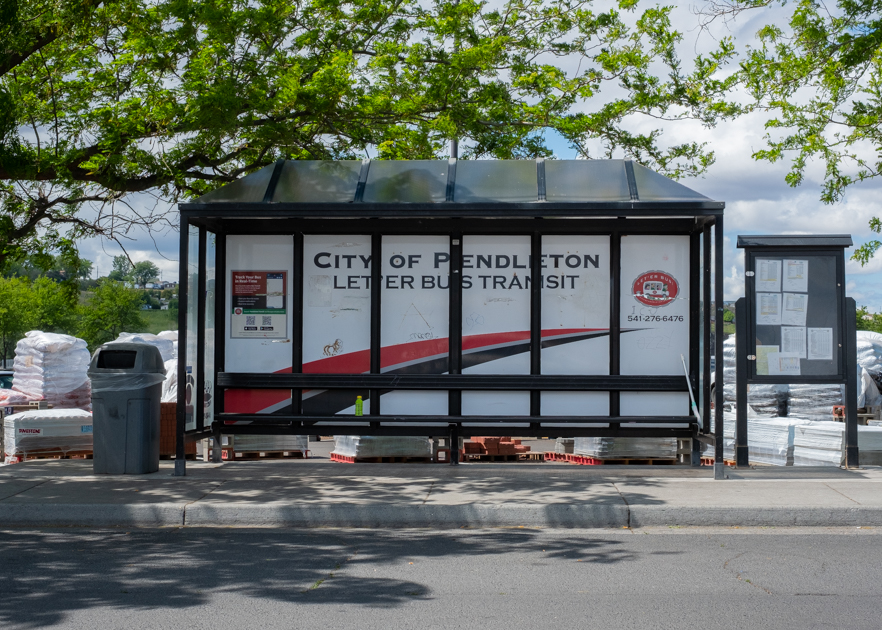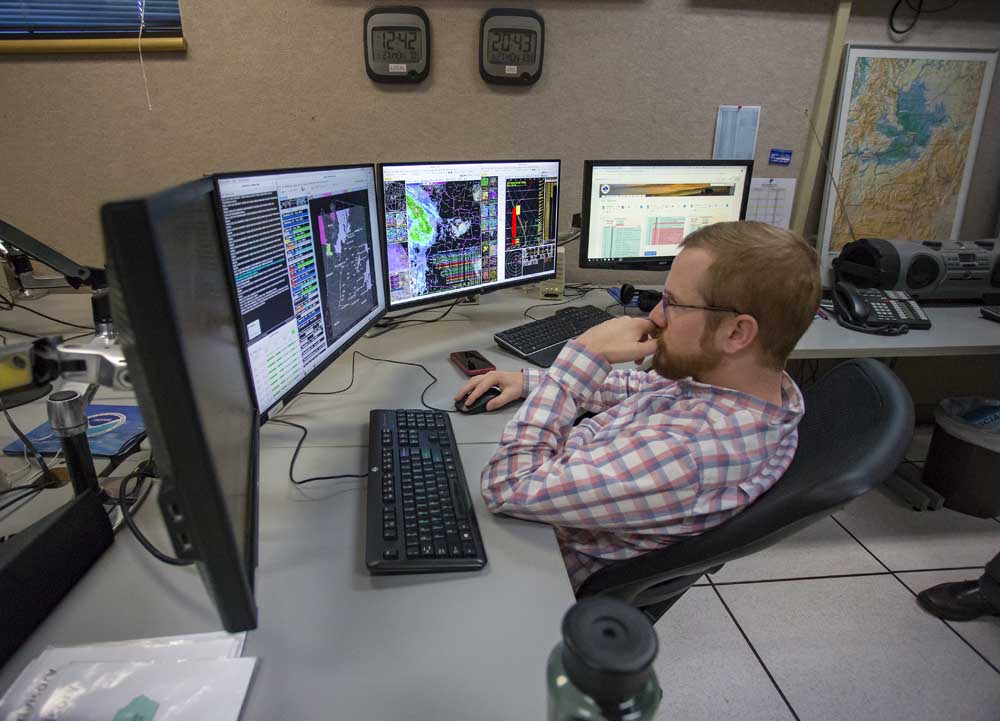Technology aids Depot aquifer cleanup
Published 2:06 pm Sunday, September 22, 2002
UMATILLA – When Mark Daugherty packs up and leaves the Umatilla Chemical Depot for good, he promises one thing is certain: The groundwater on site will be safe to drink.
He’s also hoping that with new technology, the state’s approval and some federal grant money, he will be able to clean the groundwater to drinking water standards better and faster than originally planned.
Daugherty is director of industrial risk management at the Depot and on-site manager for cleaning groundwater poisoned by toxic TNT and RDX residue. The toxins, or nitro-based explosive contaminants, have seeped from former holding lagoons on the Depot into a huge underground aquifer which spreads far beyond the Depot’s 19,729 acres.
In the 1950s, contaminated wastewater was placed in the man-made holding lagoons after the Army washed out outdated weapons then let the dirty water sit in the lagoons, Daugherty said. The wastewater was so contaminated at the site that it turned bright pink when it was placed in the lagoons. The soils around the holding lagoons also turned pink. The water then seeped through the lagoons into the underground aquifer.
As a result of the contamination, there is a 350-acre plume of toxic water in an underground aquifer at the Depot. The plume eventually could reach the Columbia River, just three miles to the south.
In order to prevent that, the Army, the Army Corps of Engineers, the Environmental Protection Agency and the Department of Environmental Protection have spent almost two decades studying how to clean up the aquifer. For seven of those years they’ve been pumping water out of the aquifer, filtering it, then re-injecting it back into the aquifer system. That will work, but it could take up to 20 additional years to continue filtering the water until it meets drinking water standards.
What Daugherty hopes, is that with a little new technology and the state’s approval, the water could be cleaned faster.
During preliminary studies, said Mike Nelson, technical project manager for the Depot’s environmental management program, it was interesting to note that the underground aquifer was not pristine. Off the Depot property, the aquifer water is used as a source for farm irrigation and also contains fertilizers and pesticides used in farming, said Nelson, who works for the Corps in Seattle.
“Right now, the water is not harmful (off-site) to humans or the environment,” Nelson said. The Depot’s filtration system is not large enough to pull water from these areas to clean, he said.
Aquifers are similar to underground rivers or lakes. Some are spring fed, but the Depot’s is not. It is recharged, Nelson said, by rain and irrigation.
Not all underground aquifer systems are connected, and this one at the Depot luckily has a cell of its own, Daugherty said. That means contaminated water will take longer to seep into river systems or other underground water bodies. However, contaminated water from the aquifer could seep out through “cracks and fissures in the basalt” to contaminate other water sources, he said.
To clean the water so it doesn’t seep into the river, about 50 million gallons of contaminated water a day, or 1,200 gallons a minute, passes through a charcoal filtration system to remove toxins. The Army pumps the water out of the aquifer from three large wells and then runs it through three huge charcoal purifying tanks, then re-injecting it back into the ground.
As the water filtration continues, the water in the 350-acre plume is cycled through the filters until it becomes clean.
The pumps cost $2.1 million to construct and $536,000 to run annually.
“The Army site at Pueblo (Colorado) is doing this now, exactly the same thing,” Daugherty said.
Brian McClure, an engineer and project manager for cleanup for the Eastern Regional group of DEQ who is based in The Dalles, said he estimates the project will take an additional 15 to 20 years to complete.
Umatilla’s project is ahead of schedule and could be completed in 10 years, but that is optimistic, McClure said. But maybe not overly optimistic, Daugherty said, if the Depot gets a nod of approval from the state to move ahead with new technologies.
The point of new technology is that it would mean Daugherty would not have to cycle the water through the filtration tanks, saving time and perhaps money.
For the past four or five years, the Army, the state and the Corps have been studying new technologies in laboratory tests that could help shorten the water treatment time, said Kira Lynch, an environmental scientist with the Corps in Seattle.
One new idea is adding a chemical to the toxic wastewater that cleans both the water and soil while it is still in the underground aquifer.
Lynch said the technology would mean the water could be cleaned in its current state underground and would not have to be pumped out, filtered and re-injected into the aquifer. The Corps has requested a grant to help them study the issue further, she said.
“It might help us do what we’re trying to do better,” Daugherty said.
If the Army wants to keep going with the process it is using now, citing the cost of infrastructure already in place, Lynch said the technologies tested at the Umatilla Depot could be used at other Department of Defense sites, saving money on a national level.
A California company is coming to the Depot in October hoping to test one of their new technologies, Lynch said.
Before the Depot and the Army begin something new, and if the new technology substantially changed the permit for cleanup already in place, McClure said public comment would be sought before any action was taken.
The aquifer cleanup is one of seven environmental cleanup projects at the Depot, besides chemical weapons incineration, that have been identified by DEQ and the Environmental Protection Agency as environmental cleanup sites.
Historically in the 1950s and 1960s, Depot workers, like those at Hanford Nuclear Reservation in Richland, dumped toxic waste onto and buried explosives and other materials into the ground.
Under a congressional mandate in 1985, the U.S. Army began planning for construction and operation of an incineration facility for destruction of obsolete chemical weapons at the Depot.
In 1986, the Environmental Protection Agency examined 35 Depot sites on the 19,729-acre Depot and came up with three that required hefty cleanup. In 1987, the Depot’s two Explosive Washout Lagoons, which were operated from the 1950s to 1965, were placed on the National Priorities List.
When the lagoons and the water and soils surrounding them made that list, Daugherty’s cleanup job began.
Each facet of the project – water and soil – was taken separately. The first, cleaning up the soils at the lagoons, turned out to be an interesting mix of farming and science.
The plan was to mix a “recipe” of alfalfa, potato waste, chicken and cow manures with soil and sawdust, Daugherty said. The mixture broke down the toxins in the contaminated soils and made them reusable.
About 14,000 tons of soil from the Depot were cleaned by this “composting” method. Depot soils were pronounced stable in 1997. The 18,000 square foot building where the munitions were cleaned in the 1950s also was razed and burned at that time.
The rehabilitated soil is used at the Depot landfill for covering Depot garbage that will not be incinerated. The landfill will then be covered by grass and natural landscaping, Daugherty said. The landfill also is lined to prevent further contamination of groundwater.
The soil and water cleanup projects at the Depot have been so far successful, Daugherty and McClure said. The other environmental projects included identifying and cleaning up the ammunition demolition area, razing the munitions cleanup building and managing the landfill.
Only one other project besides the aquifer water is not complete. That project is the cleanup of buried ammunitions and metals on 1,750 acres at the Depot. Some of the munitions have been moved to the landfill, but other metals will be left buried on site.
—
Reporter Carie L. Call can be reached at 1-800-522-0255 (ext. 1-304 after hours) or e-mail: ccall@eastoregonian.com.





